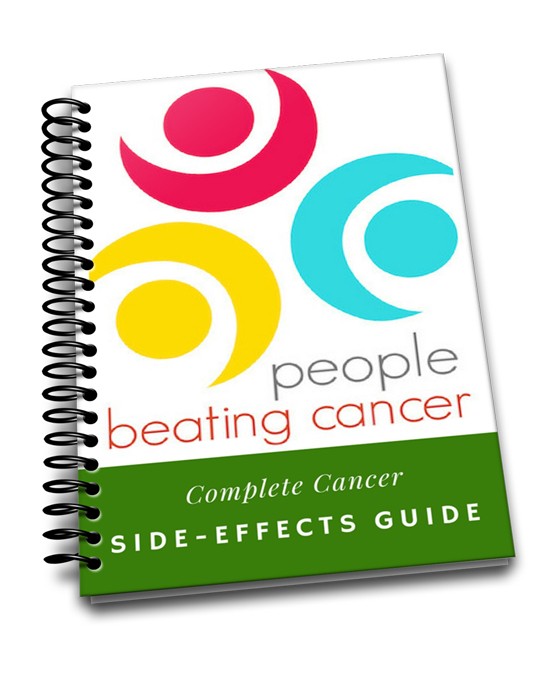
Diagnosed with Cancer? Your two greatest challenges are understanding cancer and understanding possible side effects from chemo and radiation. Knowledge is Power!
Learn about conventional, complementary, and integrative therapies.
Dealing with treatment side effects? Learn about evidence-based therapies to alleviate your symptoms.
Click the orange button to the right to learn more.
Low-dose Tamoxifen for DCIS-Less is More

“When we compare our low-dose tamoxifen data with results from the… trials of tamoxifen given at 20 mg per day, we see comparable risk reduction and significantly reduced serious adverse events, respectively”
When considering tamoxifen for a DCIS diagnosis, according to the study linked and excerpted below, less is more. While a diagnosis of DCIS is pre-breast cancer and not frank brest cancer, newly diagnosed patients may worry about the risk of relapse. But because DCIS has a 10 year survival rate that is so high, it may be difficult to justify years of serious adverse events aka side effects.
The solution? Low-dose tamoxifen- 5 mg daily for three years instead of 20 mg daily for five years. According to the article below, the efficacy or reduced risk of relapse is the same but the risk of “adverse events” are greatly reduced.
Anytime a person can achieve the same benefit but with less toxicity, the choice is clear.
I am not a DCIS survivor. I am a long-term survivor of a very different cancer called multiple myeloma. My interest in writing this blog post is a concept that I live with and write about frequently. I live with extensive long-term and late stage side effects that could have been moderated or eliminated completely by lowering the dose of my conventonal chemotherapy.
When I find a study liked the one below, I rush to write about less toxic chemotherapy being just as effective as higher dose chemotherapy but without the degree of adverse events (side effects).
Do you know the real kicker? There are a host of evidence-based non-toxic therapies that have been shown to also reduce the risk of a breast cancer diagnosis after a DCIS diagnosis.
To learn more about DCIS and the evidence-based therapies that can help you prevent its spread into invasive breast cancer, please watch the video below:
Have you been diagnosed with Ductal Carcinoma In-Situ? Please scroll down the page, post a question or comment and I will reply to you ASAP.
Thank you,
David Emerson
- Cancer Survivor
- Cancer Coach
- Director PeopleBeatingCancer
Recommended Reading:
- Can Your Lumpectomy Spread Breast Cancer?
- DCIS Lumpectomy- Atypical Hyperplasia, Clear Margins. Suggestions?
- Cancer Coaching-Ballooning Survivor population in the U.S.
The combination of green tea and tamoxifen is effective against breast cancer.
” We observed that green tea increased the inhibitory effect of tamoxifen on the proliferation of the ER (estrogen receptor)-positive MCF-7, ZR75, T47D human breast cancer cells in vitro. This combination regimen was also more potent than either agent alone at increasing cell apoptosis…”
Go Low With Tamoxifen for DCIS
5 MG a Day Is Effective, Says Phase 3 Trial
“Daily use of low-dose (5 mg) tamoxifen (multiple brands) for a shorter-than-usual treatment period (3 years) for patients with ductal carcinoma in situ (DCIS) and other forms of noninvasive breast cancer halved the recurrence of new breast cancer events in comparison with placebo, a new Italian study indicates…
Tamoxifen is typically prescribed post surgery at a dosage of 20 mg/day for 5 years for DCIS and these other conditions… Tamoxifen was developed in the 1960s, but the minimal effective dose has never been established…
In the new 500-patient trial, 5.5% patients in the low-dose tamoxifen arm had either experienced disesase recurrence or had new disease, including invasive disease, compared with 11.3% in the placebo arm…
“When we compare our low-dose tamoxifen data with results from the NSABP B-24 and NSABP-P1 trials of tamoxifen given at 20 mg per day, we see comparable risk reduction and significantly reduced serious adverse events, respectively,” said De Censi in a press statement at the meeting…”
Tamoxifen has also been shown to increase the incidence of deep vein thrombosis, pulmonary embolism, and cataracts.1,21 Both deep vein thrombosis and pulmonary embolism pose significant health risks, and can lead to heart attacks, ischemic stroke, and death…


